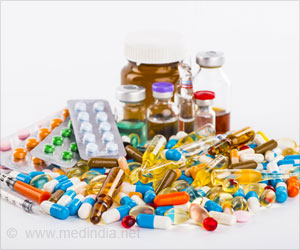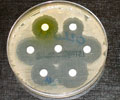- Antibiotic resistance is becoming an emerging global health threat.
- Scientists have discovered a mechanism by which the deadly superbug fights against the antibiotic treatment.
- New clues have been identified from the mechanism to counter ‘superbug’ antibiotic resistance.
Changes in the 'Superbug' Identified
A latest generation electron microscope was used to image the superbugs at the molecular level. The changes in the superbugs that have become resistant to most of the antibiotics were identified.
The bacterial samples of antibiotic-resistant Staphylococcus aureus or ‘Golden Staph’ that were taken from a hospital patient were examined. Most of them compared data from a non-resistant strain along with their overseas counterparts.
The research team even included Shashi Bhushan from NTU, and Zohar Eyal and Nobel Laureate, Professor Ada Yonath from the Weizmann Institute who won the Nobel Prize for Chemistry in 2009.
Monash BDI scientist and lead researcher Dr. Matthew Belousoff, said, "Using the combined data we could rationalize how the bacteria escapes drug treatment by a really important hospital antibiotic and describe in molecular detail how it becomes like a superbug."
"Knowing what your enemy is doing is the first step to the next phase of new drug design," he said.
Antibiotic Resistance
Antibiotics are life-saving drugs prescribed for bacterial infections.The ability of the microbes to resist the drug effects is referred to as Antimicrobial Resistance.
Around 2 million people in the world are infected with bacteria. And around 23,000 people die every year due to infections.
The cost of treatment for patients with drug-resistant infections is higher than the care for patients with nonresistant infections. The new findings will help to counter superbug and treat drug-resistant infections.
References
- Matthew J. Belousoff, Zohar Eyal, Mazdak Radjainia, Tofayel Ahmed, Rebecca S. Bamert, Donna Matzov, Anat Bashan, Ella Zimmerman, Satabdi Mishra, David Cameron, Hans Elmlund, Anton Y. Peleg, Shashi Bhushan, Trevor Lithgow, Ada Yonath. Structural Basis for Linezolid Binding Site Rearrangement in the Staphylococcus aureus Ribosome. mBio, 2017; 8 (3): e00395-17 DOI: 10.1128/mBio.00395-17
- Antimicrobial resistance - (http://www.who.int/mediacentre/factsheets/fs194/en/ )
- Antibiotic / Antimicrobial Resistance - (https://www.cdc.gov/drugresistance/)
Source-Medindia















